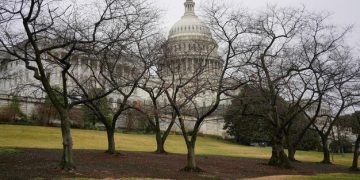How Global Conflicts Reshape US Immigration Policies

Global conflicts significantly influence US immigration policies by increasing refugee flows, prompting policy adjustments, and heightening security concerns, thereby shaping the criteria and processes for entering the United States.
The intersection of global conflicts and US immigration policies creates a dynamic and often contentious landscape. Understanding how are global conflicts affecting US immigration policies requires examining the multifaceted ways these conflicts drive migration, influence policy changes, and raise humanitarian and security concerns.
Understanding the Link Between Global Conflicts and Migration
Global conflicts often lead to mass displacement, forcing individuals and families to seek safety and stability elsewhere. The United States, with its history as a haven for those fleeing persecution and violence, often becomes a destination for these displaced populations. This influx of migrants can have significant implications for US immigration policies.
Understanding the root causes of migration is crucial. When conflicts erupt, people are often left with no choice but to leave their homes. This creates a surge in asylum seekers and refugees, placing pressure on the US immigration system to respond effectively and humanely.

The Role of Conflict-Induced Displacement
Conflict-induced displacement refers to the forced movement of people due to armed conflicts, civil wars, and other forms of violence. These events often result in widespread human rights abuses, economic devastation, and social disruption, making it impossible for people to remain in their homes.
- Increased asylum claims: Conflicts often lead to a surge in asylum claims in the US, as individuals seek protection from persecution and violence.
- Humanitarian crises: Mass displacement can create humanitarian crises, requiring the US to provide assistance and support to refugees and displaced populations.
- Strain on resources: The influx of migrants can strain resources in host countries, including housing, healthcare, and social services.
The impact of conflict-induced displacement on US immigration policies is multifaceted. It often necessitates adjustments to existing policies to accommodate the needs of asylum seekers and refugees while also addressing concerns about national security and border control.
Historical Examples of Conflicts Shaping US Immigration
Throughout history, various global conflicts have significantly shaped US immigration policies. Examining these historical examples provides valuable insights into how the US has responded to different waves of migration driven by conflict and instability.
From World War II to the Vietnam War, the US has often adjusted its immigration policies to accommodate refugees and displaced persons fleeing these conflicts. These adjustments have often been driven by a combination of humanitarian concerns and strategic interests.
The Vietnam War and the Indochina Migration and Refugee Assistance Act
The Vietnam War led to a significant influx of refugees from Southeast Asia, prompting the US to enact the Indochina Migration and Refugee Assistance Act of 1975. This act provided a legal framework for admitting and resettling refugees from Vietnam, Laos, and Cambodia.
- Increased refugee admissions: The act led to a significant increase in refugee admissions from Indochina, providing a pathway to resettlement in the US.
- Humanitarian assistance: The US provided financial and logistical assistance to support the resettlement of Indochinese refugees.
- Long-term integration: Many Indochinese refugees successfully integrated into American society, enriching the country’s cultural fabric.
This historical example demonstrates how global conflicts can lead to significant changes in US immigration policies, reflecting both humanitarian principles and strategic considerations.
The Impact of Modern Conflicts on US Immigration
Modern conflicts, such as those in Syria, Afghanistan, and Ukraine, continue to have a profound impact on US immigration policies. These conflicts drive migration flows, create humanitarian crises, and raise complex policy challenges for the US government.
The US response to these conflicts often involves a combination of humanitarian aid, refugee resettlement programs, and adjustments to immigration enforcement policies. However, these responses are often subject to political debates and competing priorities.

The Syrian Civil War and Refugee Resettlement
The Syrian civil war has led to one of the largest humanitarian crises in recent history, with millions of Syrians displaced both internally and externally. The US has responded by establishing a refugee resettlement program for Syrian refugees.
While the US has admitted thousands of Syrian refugees, the process has been slow and complex due to security concerns and political opposition. This highlights the challenges of balancing humanitarian responsibilities with national security concerns.
The ongoing conflicts in various regions continue to shape US immigration policies, requiring ongoing adjustments and adaptations to address the evolving needs of displaced populations.
Security Concerns and Policy Adjustments
Global conflicts often raise security concerns, leading to policy adjustments aimed at strengthening border security and screening procedures. These adjustments can have significant implications for asylum seekers and refugees, as well as for the overall immigration system.
Balancing security concerns with humanitarian obligations is a key challenge for US immigration policies. While it is important to ensure national security, it is also crucial to uphold the rights of those seeking protection from persecution and violence.
Enhanced Screening Procedures
In response to security concerns, the US has implemented enhanced screening procedures for asylum seekers and refugees. These procedures often involve more rigorous background checks, biometric data collection, and in-depth interviews.
- Increased scrutiny: Enhanced screening procedures can lead to increased scrutiny of asylum claims, potentially delaying or denying protection to those who genuinely need it.
- Backlogs and delays: More rigorous screening can contribute to backlogs and delays in the immigration system, further complicating the process for asylum seekers and refugees.
- Legal challenges: Enhanced screening procedures have faced legal challenges, with critics arguing that they violate international law and due process rights.
The implementation of security measures must be carefully balanced with the need to provide fair and efficient processing of asylum claims.
The Role of International Law and Treaties
International law and treaties play a significant role in shaping US immigration policies, particularly with regard to asylum and refugee protection. The US is a party to several international agreements that outline its obligations to protect those fleeing persecution and violence.
These international obligations often serve as a guide for US immigration policies, ensuring that the country adheres to international standards of human rights and humanitarian law.
The 1951 Refugee Convention and its Protocol
The 1951 Refugee Convention and its 1967 Protocol are key international agreements that define the rights and obligations of states with regard to refugees. The US is a party to the 1967 Protocol, which incorporates the principles of the Refugee Convention into US law.
Under the Refugee Convention, a refugee is defined as a person who has a well-founded fear of being persecuted for reasons of race, religion, nationality, membership of a particular social group, or political opinion. The Convention prohibits states from returning refugees to countries where they would face persecution, a principle known as non-refoulement.
The 1951 Refugee Convention and its Protocol provide a legal framework for protecting refugees worldwide and ensuring that they receive the necessary assistance and protection.
Future Trends and Challenges
Looking ahead, the intersection of global conflicts and US immigration policies is likely to remain a complex and challenging issue. Factors such as climate change, political instability, and economic inequality are expected to exacerbate displacement and migration flows, placing further pressure on the US immigration system.
Addressing these future challenges will require a comprehensive and coordinated approach that involves not only immigration policies but also foreign policy, development assistance, and international cooperation.
- Climate-induced migration: Climate change is expected to lead to increased displacement and migration, as people are forced to leave their homes due to environmental degradation and natural disasters.
- Political instability: Political instability and armed conflicts are likely to continue driving migration flows, as people seek safety and stability in other countries.
Finding effective and humane solutions to these challenges will require a commitment to international cooperation and a willingness to address the root causes of displacement and migration.
| Key Point | Brief Description |
|---|---|
| 🌍 Conflict Displacement | Conflicts drive people to seek refuge, increasing asylum claims in the US. |
| 📜 Policy Adjustments | US immigration policies adjust to accommodate refugees while addressing security. |
| 🛡️ Security Concerns | Increased security measures impact asylum seekers and the immigration process. |
| ⚖️ International Law | International laws and treaties guide US policies on refugee protection. |
Frequently Asked Questions
▼
Global conflicts lead to increased numbers of refugees and asylum seekers. This forces the US to adjust its immigration quotas, security protocols, and humanitarian aid programs to accommodate or manage these inflows.
▼
The US has historically been a major country for refugee resettlement. The government works with various international and domestic organizations to provide housing, healthcare, and job training to help refugees integrate into American society.
▼
Security concerns often lead to stricter vetting processes and increased surveillance. This can result in longer processing times for asylum claims and greater barriers for individuals trying to enter the US from conflict zones.
▼
Under international law, particularly the 1951 Refugee Convention and its Protocol, the US is obligated to provide protection to individuals with a well-founded fear of persecution and cannot forcibly return them to dangerous situations.
▼
Future conflicts, especially those exacerbated by climate change or resource scarcity, could lead to even larger waves of displaced people. This would likely prompt significant changes in US immigration policies, potentially increasing border security and reevaluating resettlement capacities.
Conclusion
In conclusion, global conflicts exert a continuous and significant influence on US immigration policies. This influence necessitates ongoing adjustments to balance humanitarian obligations, national security concerns, and international legal standards. As global instability persists, understanding these dynamics becomes ever more crucial for informed policy-making and a just response to human displacement.





